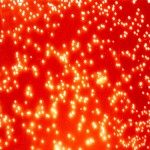Link to Pubmed [PMID] – 18203135
Eur. J. Immunol. 2008 Feb;38(2):437-47
Neutrophils are increasingly thought to modulate dendritic cell (DC) functions. We investigated the role of the neutrophil-DC partnership in the response to Mycobacterium bovis BCG-the vaccine used against tuberculosis. We compared neutrophil-DC crosstalk in humans and mice, searching for functional differences. In both species, neutrophils captured fluorescent BCG-enhanced green fluorescent protein (EGFP) and were more phagocytic than DC. Non-apoptotic BCG-infected neutrophils clustered with immature DC, establishing intimate contacts with dendrites, at which fluorescent intact bacilli were observed. Physical interactions between neutrophils and DC were required for DC activation. Human BCG-infected DC produced interleukin (IL)-10, an inhibitory cytokine, whereas DC exposed to BCG-infected neutrophils produced low to undetectable amounts of the cytokine. Mouse BCG-infected neutrophils induced sustained IL-2 production by DC. Human DC exposed to BCG-infected neutrophils stimulated recall T cell reactivity from vaccinated donors. Mouse DC infected with recombinant ovalbumin (OVA)-producing BCG (rBCG(ova)) elicited proliferation of TCR-OVA-transgenic CD4 and CD8 T cells. Moreover, exposing DC to rBCG(ova)-infected neutrophils enhanced OVA presentation. Thus, in mice and humans, neutrophils help DC to cross-present BCG antigens to T cells. Our results suggest that this “ménage à trois” involving neutrophils, DC and T cells plays a major role in the immune response to BCG.

